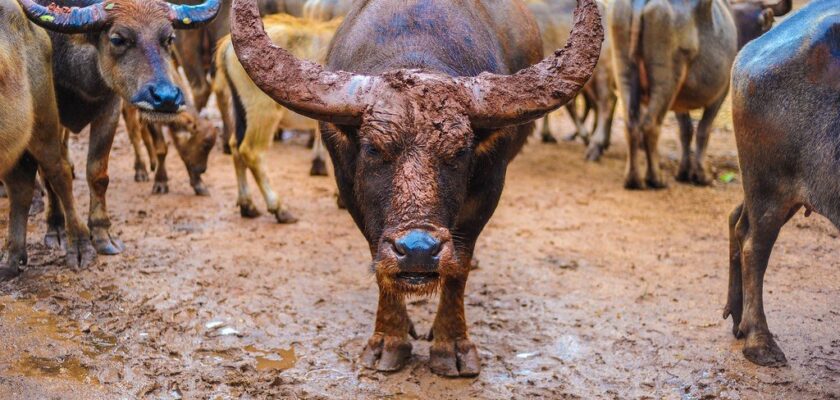Temple of Tigers (Wat Pa Luangta Bua Janasampanno)
Those wishing to tickle nerves can recommend a trip to Wat Pha Luang Ta Bua – known as “Temple of Tigers“. The monks keep sixteen tigers here at the moment, as well as other animals such as monkeys, horses, peacocks, and buffalo.”
The seriousness of the world-famous project is confirmed by close collaboration with an animal behaviorist from Bangkok. The biologist believes that these tigers, which are not used to hunting, have no chance of survival in the wild. It is best to plan a visit for the early afternoon hours.
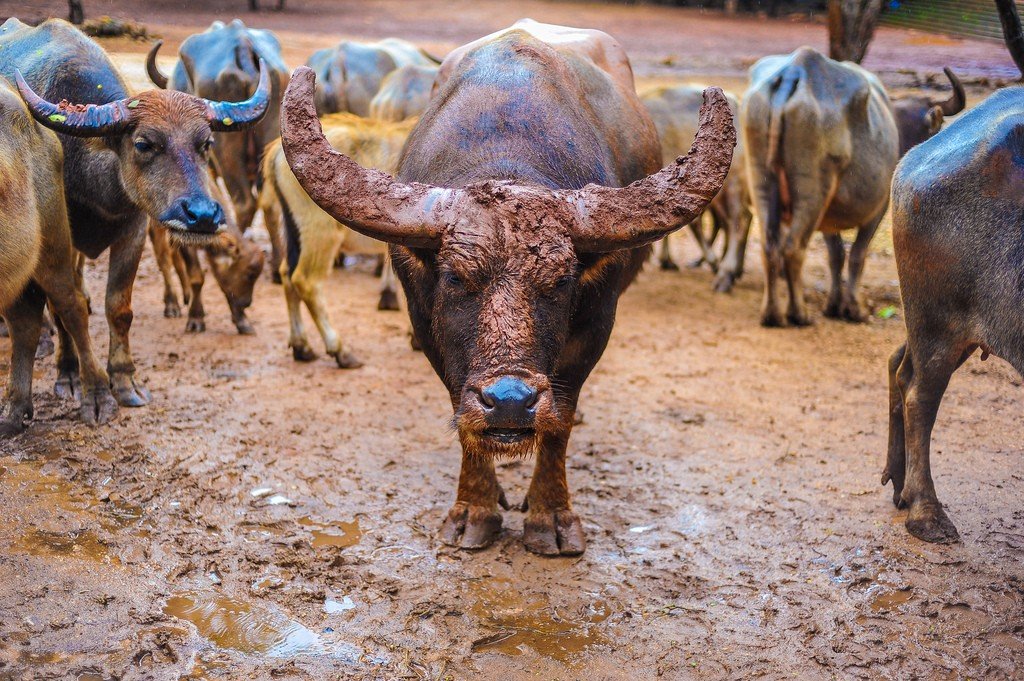
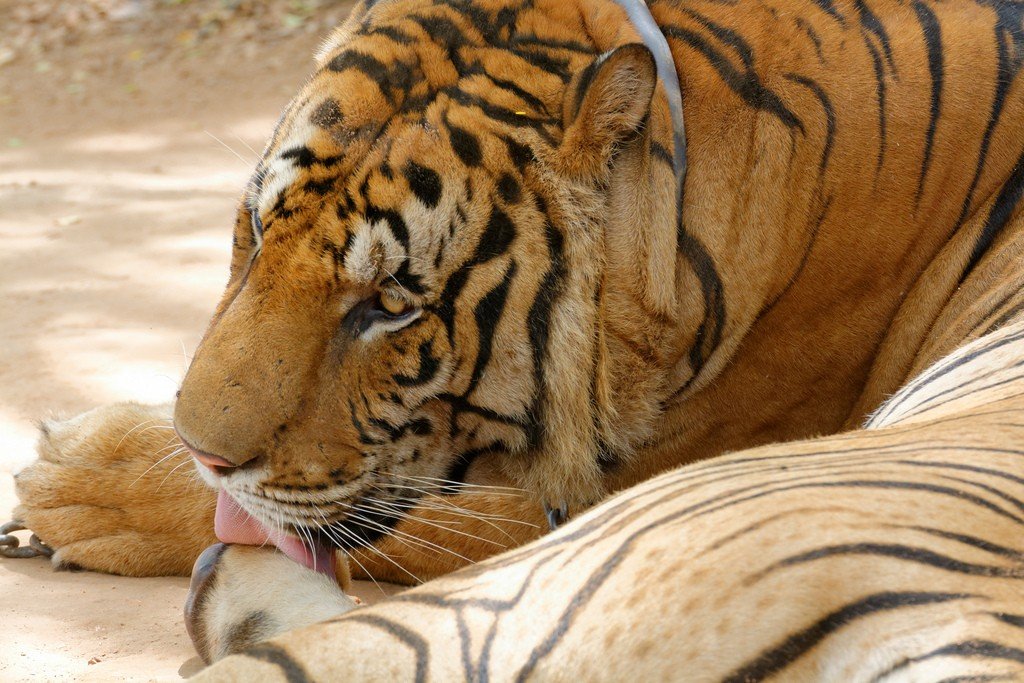
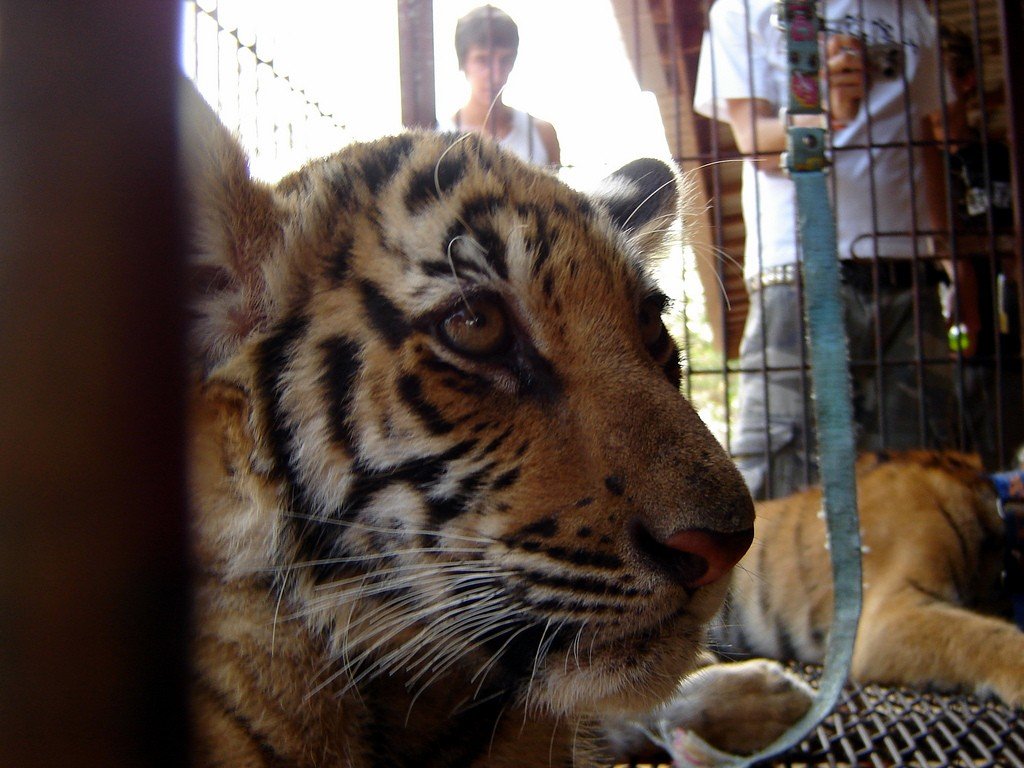
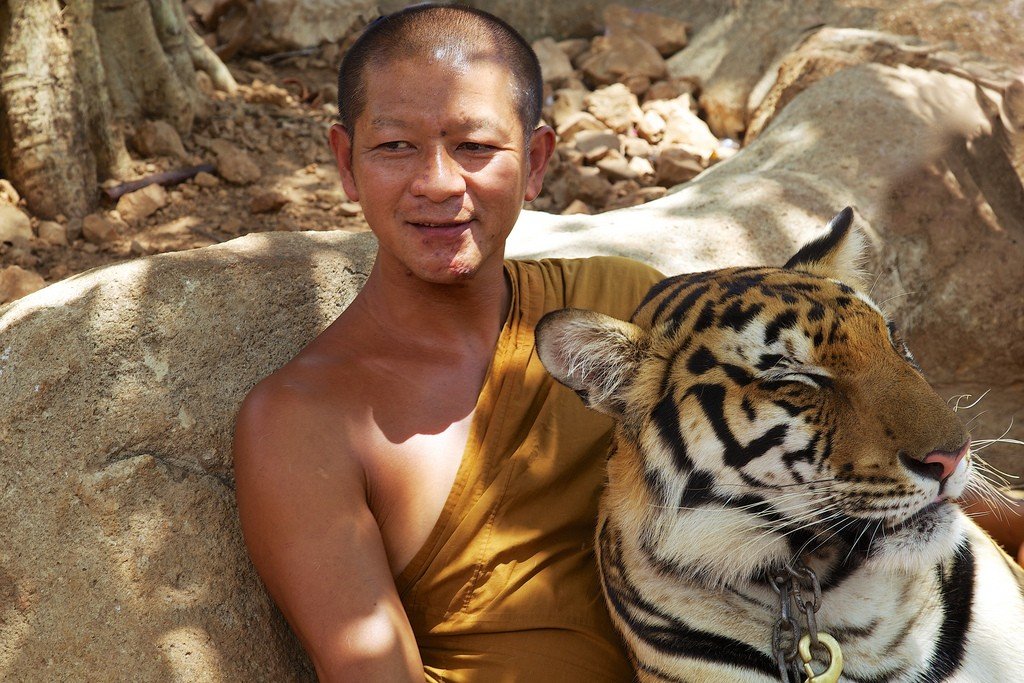
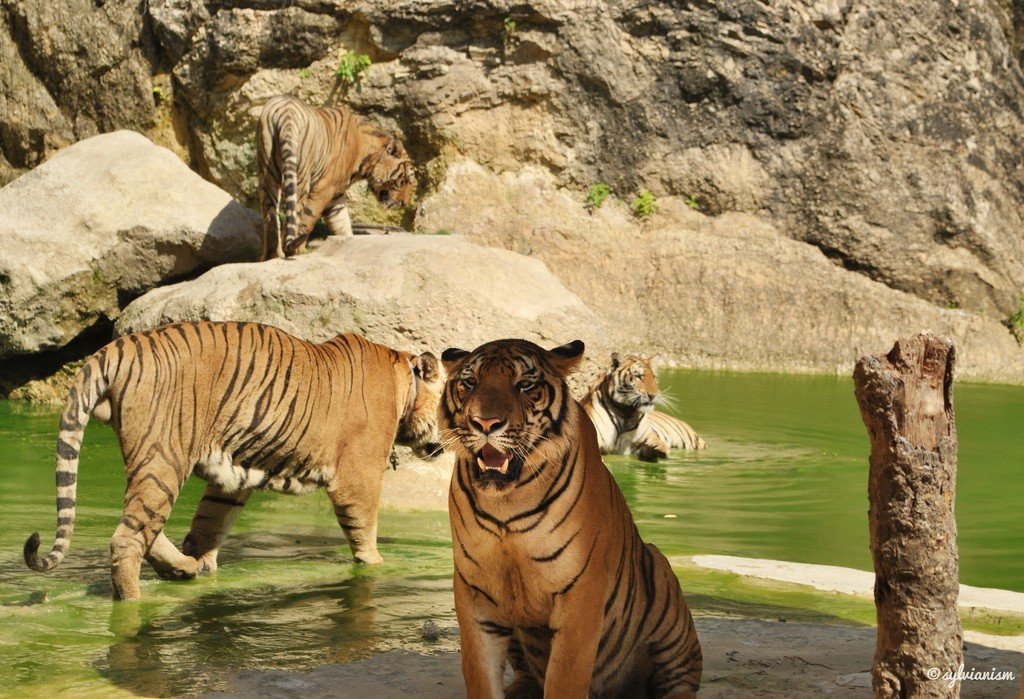

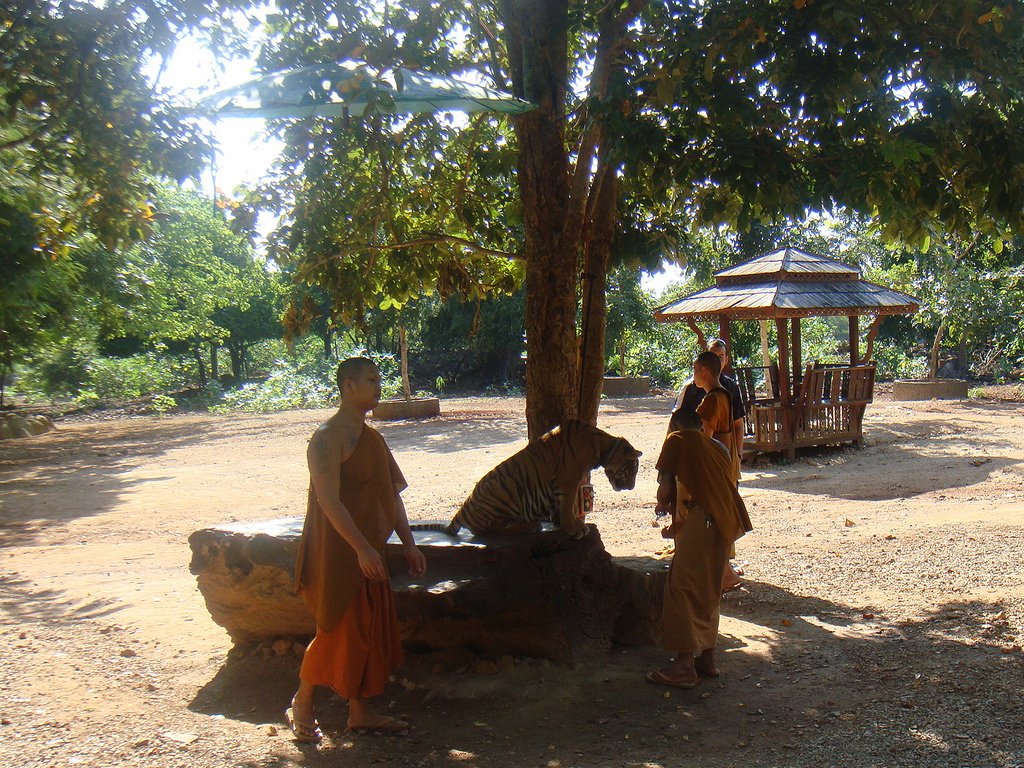
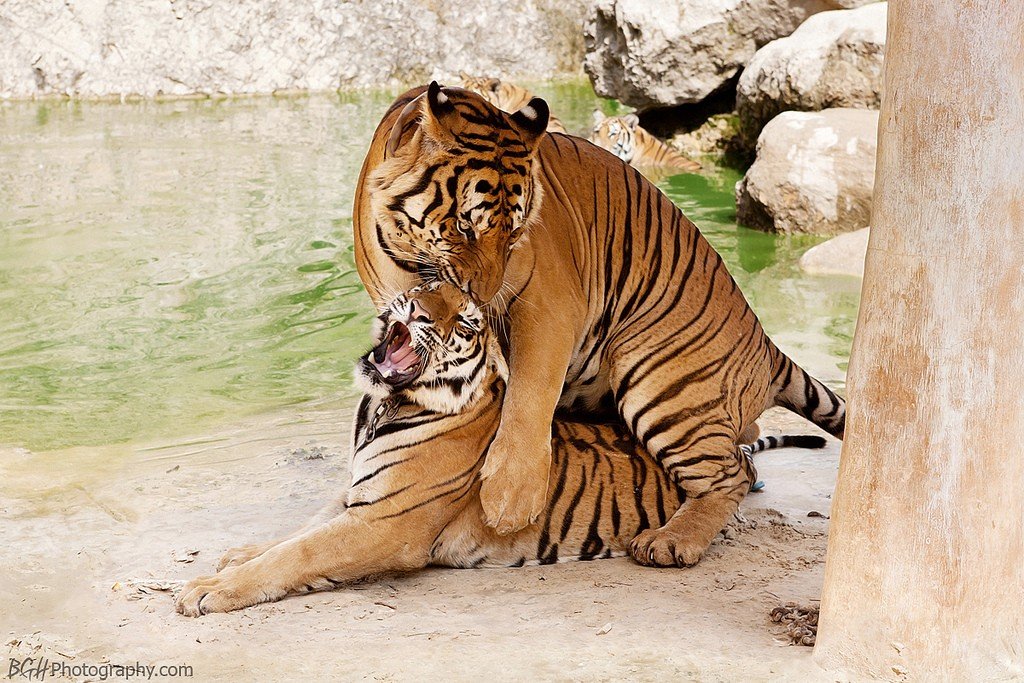
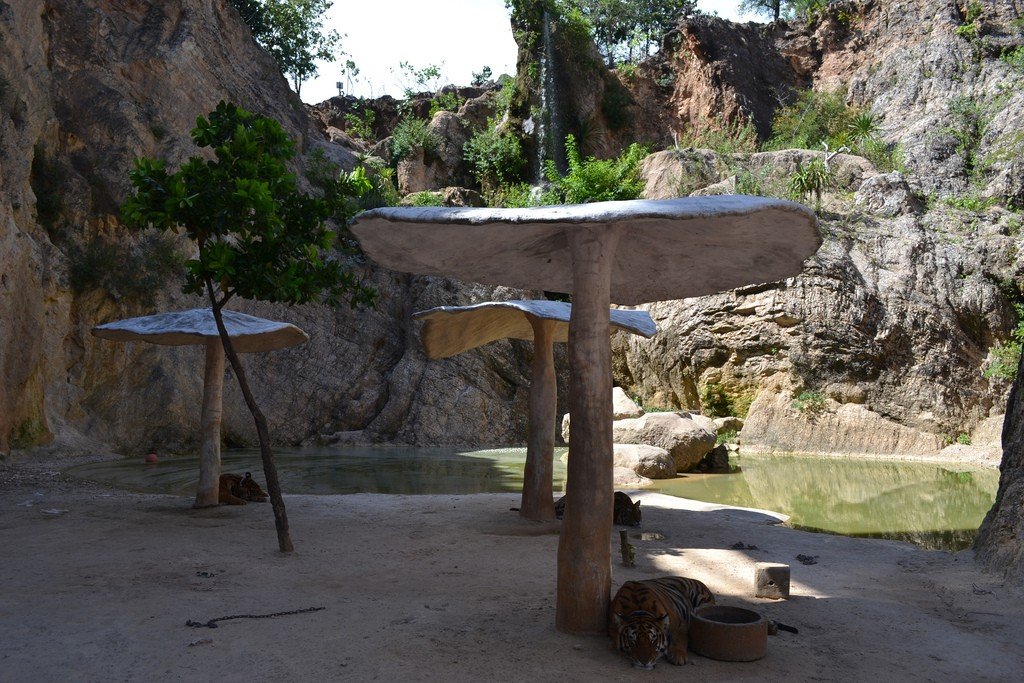
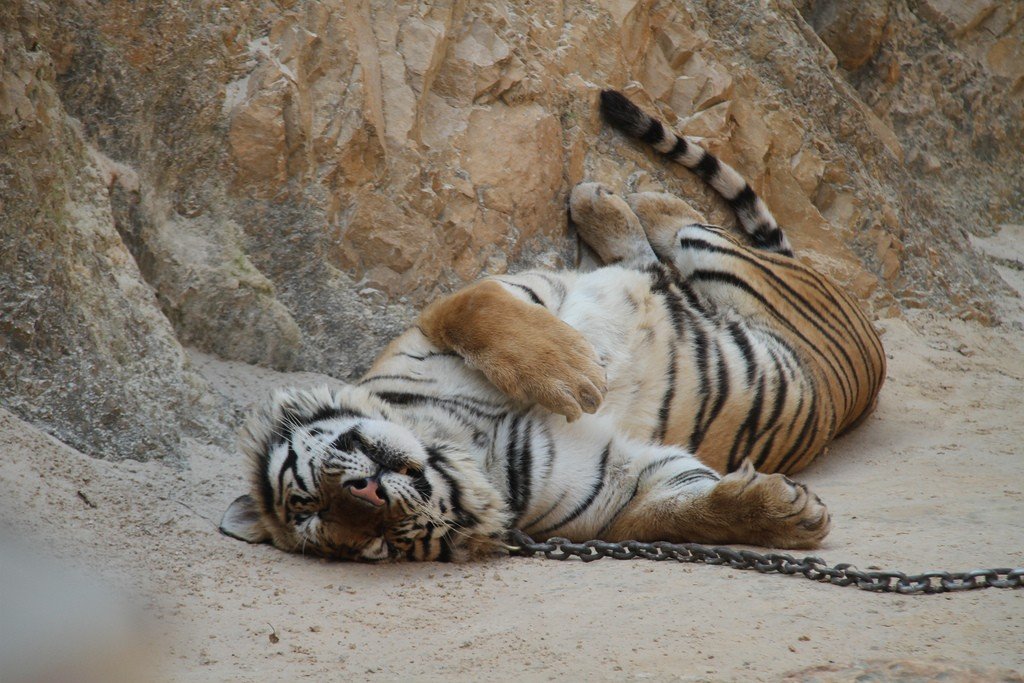
General Information
The tigers spend most of their time in cages, but in the summer of 2011 they opened Tiger Island where the tigers no longer live in cages. A 1,000-acre area was also acquired and is being cultivated, which will allow the tigers to live in an almost natural environment. The tigers are fed boiled chicken and dry cat food. The chicken is boiled so that there is no taste of blood and the smell of blood is not associated with the tigers’ food, as well as to kill the bird flu virus that can be contained in raw chicken. According to the monastery’s official website, dry cat food is given to the tigers to get essential nutrients, such as taurine, which is lost in cooked chicken.
.The drive from Bangkok to the monastery takes about 2.5 hours. Between 300 and 600 visitors visit the temple daily. On the temple grounds are donation boxes for those who wish to support the monastery. According to the monastery staff, feeding and care costs about $100 per day per tiger.
.
At the monastery, guests can bottle-feed tiger cubs, play with the older tigers, participate in bathing the tigers, hand-feed them, and take photos with sleeping adult tigers.
.The tigers are cared for by monks, foreign volunteers and local staff. Once a day, the tigers are taken on a leash to a nearby canyon. The tigers used to walk freely there, but now, with the increasing number of visitors and the tigers themselves, they are chained for safety. Employees take visitors by the hand to the tigers from the back so that they can sit next to the animals and pet them. During this time, the monastery staff monitors the tiger’s behavior so that they can intervene if the tiger becomes agitated. Visitors who are afraid to approach the tigers can observe them from a distance.
The money raised from ticket sales is being used to feed the animals, as well as to fund the construction of a large sanctuary that will allow the animals to live in an almost natural environment. Part of the reserve is already open and inhabited by tigers, but another part is still under construction, as a fence next to a moat needs to be completed to keep the tigers from leaving the reserve. The monastery is reforesting (“Buddhist park”) the vast surrounding areas. This will allow tigers to be released into the wild in the future.
.Due to the lack of organized breeding programs, as well as available DNA data on the tigers, their origins are unknown. However, it is believed that they are all related to Indochinese tigers there (except for Mack, who is a Bengal tiger). There is also the possibility that there are recently discovered Malayan tigers there and it is possible that many of them are mixed breeds.
.